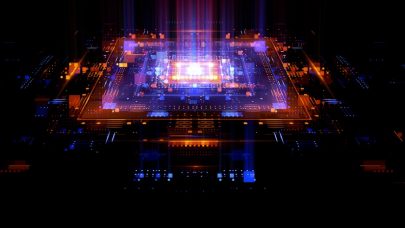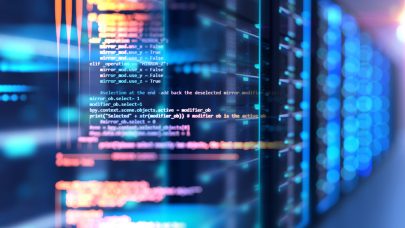Petaflop per second deep learning training performance on the NERSC (National Energy Research Scientific Computing Center) Cori supercomputer has given climate scientists the ability to use machine learning to identify extreme weather events in huge climate simulation datasets. Predictive accuracies ranging from 89.4% to as high as 99.1% show that trained deep learning neural networks (DNNs) can identify weather fronts, tropical cyclones, and long narrow air flows that transport water vapor from the tropics called atmospheric rivers. As with image recognition, Michael Wehner (senior staff scientist, LBNL) noted they found the machine learning output outperforms humans. [i]
The strong relationship between ground truth and the neural network prediction can be seen in the classification plus regression results reported by Wehner at the recent Intel Developer Conference in Denver, Colorado.

When explaining the importance of this work, Wehner believes that the big impact lies in assessing the impact of climate change as exemplified by the recent painful experiences of hurricanes Harvey (tied with hurricane Katrina as the costliest tropical cyclone on record), Irma (the strongest storm on record to exist in the open Atlantic region), and Maria (regarded as the worst natural disaster on record in Dominica and Puerto Rico).
AI needed to evaluate faster and more accurate climate models
The performance of modern leadership class supercomputers like the CPU-based NERSC Cori system provides scientists an extraordinary tool to model climate change significantly faster and far more accurately than was possible on previous generation supercomputers. For example, Wehner believes that simulated storms can run 300x to 10,000x faster than real time[ii]. This meets the needs of climate scientists who need to run many-century long simulations to evaluate the impact of climate change far into the future.
Wehner pointed out that while humans can (and do) perform well in identifying and tracking extreme weather events in real time, they simply cannot keep up when climate models run two to five orders of magnitude faster. Thus machine learning has to be used to identify and track extreme weather events. Further, these machine learning based results can be used to validate the climate models so we have confidence in the future predictions of these models.
More powerful machines also means that scientists are able to run climate models with higher spatial resolution.
Utilizing higher spatial resolution models, Wehner points is necessary because only high resolution climate models (<25Km) can realistically reproduce extreme storms[iii]. The challenge for climate and computational scientists is that these higher spatial resolution models generate tens to hundreds of terabytes of data, thus increasing the challenges of evaluating the output of these models.
Visually, the benefits of higher spatial resolution models can be easily seen in the comparative images between a 200 km and 25 km spatial resolution simulation shown below.

Valuable insight as well as confirmation of human intuition can be obtained from these long-term high resolution climate simulations. The following figure, for example, represents an assessment of what will happen to the number and intensity of hurricanes as the climate warms. The chart reflects the results of 75 million hours of climate simulation on the Cori supercomputer. The conclusion from this study is that a world that is 1.5oC and 2oC warmer that today will experience more frequent and intense hurricanes. [iv]

Scaling deep learning from images to climate
Reflecting the thought behind the research, Prabhat, (Director Big Data Center, NERSC) observes that identifying phenomena in climate data is analogous to commercial vision applications as shown in the following slide from his Intel Developer Conference keynote presentation.

Prabhat points out that initial supervised training results show that this analogy is correct in that machine learning was able to train and recognize each of three desired atmospheric phenomena with high accuracy.


Training DNNs at 15 PF/s and with strong scaling
This climate problem was used in a collaborative effort between Intel, NERSC and Stanford to demonstrate the fastest and most scalable deep-learning training implementation in the world according to the authors of the paper Deep Learning at 15PF: Supervised and Semi-Supervised Classification for Scientific Data. More specifically, the authors report that a configuration of 9600 self-hosted 1.4GHz Intel Xeon Phi Processor 7250 based nodes achieved a peak rate between 11.73 and 15.07 PF/s and an average sustained performance of 11.41 to 13.47 PF/s.
The following strong scaling plots (below) show that the hybrid approach advocated by Kurth, et. al. scales well to run on the thousands of Cori nodes. Ioannis Mitliagkas (former Postdoctoral scholar at Stanford and currently Assistant Professor at the University of Montreal) emphatically states, “People typically report weak scaling, because strong scaling is hard.” He continues, “For machine learning systems, strong scaling (keeping the total amount of work constant) is more representative of actual performance.”[vii]

Summary
Powerful leadership class supercomputers like the CPU-based Cori supercomputer have made fast, accurate global climate simulations possible. Innovations such as the petascale capable hybrid machine learning technique pioneered by Intel, NERSC and Stanford means those same machines can also train DNNs to evaluate the tens to hundreds of terabytes of data created by these faster and more accurate climate simulations.
About the Author
Rob Farber is a global technology consultant and author with an extensive background in HPC and in developing machine learning technology that he applies at national labs and commercial organizations. Rob can be reached at [email protected].
[i] https://software.intel.com/en-us/events/hpc-devcon/2017/keynote?multiplayer=5646473936001
[ii] ibid
[iii] ibid
[iv] ibid
[v] https://arxiv.org/abs/1605.01156
[vii] The authors point out that weak scaling is easy to achieve! However, it is not representative of true performance as it increases the total batch size as the scale increases. They note that most people who claim to be doing large-scale ML/DL report weak scaling. Strong scaling is more representative of true performance and it is hard to achieve. In strong scaling the batch size used per synchronous group is fixed: this means that no wasted computation happens at large scales. See Ameet Talwalkar’s paper and online tool (Paleo) for a model of DL system performance and good demonstrations on how strong scaling suffers for real systems. In terms of the hardware efficiency, hybrid systems can deliver superior strong scaling (this is what the top plots are showing).

































































